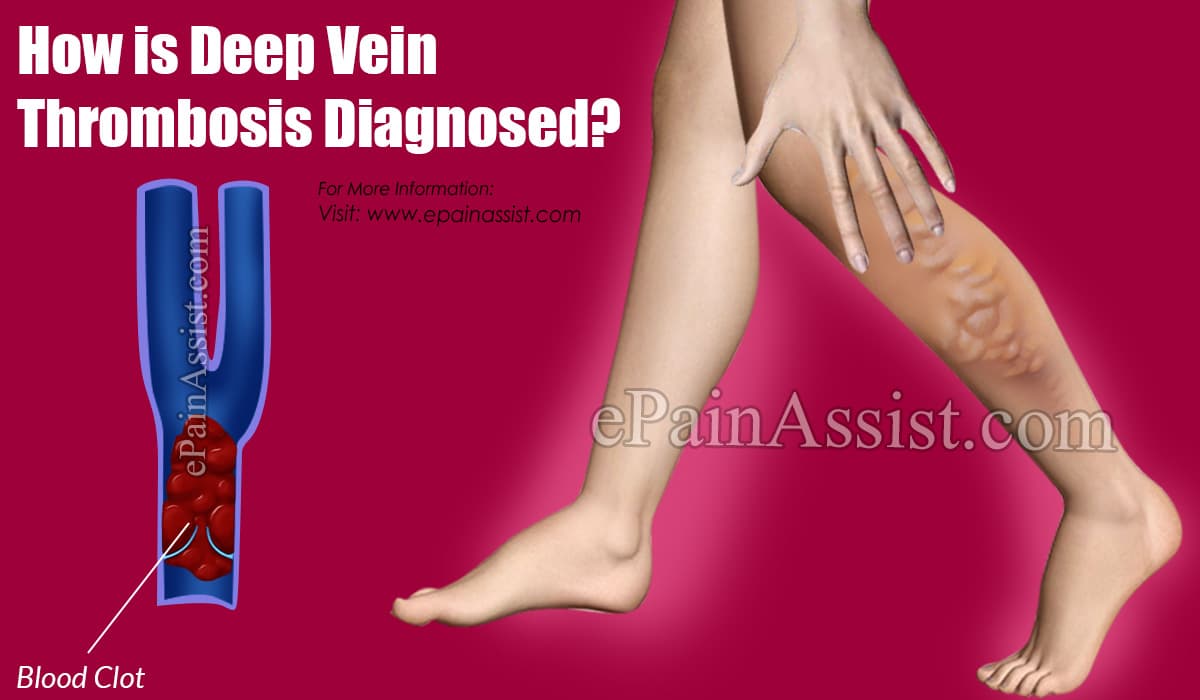How is Deep Vein Thrombosis Diagnosed?
The process of diagnosis of deep vein thrombosis can be varied ways. It depends on the doctor and the type of blood clot the patient has. Few of the methods of diagnosis are mentioned below-

Ultrasound- In this method for diagnosing deep vein thrombosis a transductor which looks like a wand-like device is placed over the part of the patient’s body. The transductor sends sound waves in the affected area where there is a clot. The sound waves basically travel through the tissue and reflect back and the computer transforms the waves into a moving image on the attached video screen. The clot so present becomes visible in the image on the screen. In some cases a series of ultrasounds have to be done over several days in order to know if the blood clot is growing larger in size. It also helps to detect the presence of a new one.
Blood Tests- Blood test for diagnosing deep vein thrombosis is something that is done frequently even while the patient is under the treatment for deep vein thrombosis. It is seen that almost everyone who have severe deep vein thrombosis have an increased level of a component in blood called D dimer. Blood tests are frequently done to check its level, even during the treatment procedure to ensure that the treatment is working properly.
Venography- This method is similarly to angiogram, where a dye is injected in a large vein in the foot or ankle of the patient to look for clots. The X-ray is taken which creates an image of the veins inside. Presence of lots can easily be detected in this way.
Computer Tomography or MRI Scans- Magnetic Resonance Imaging or even CT scans for diagnosing deep vein thrombosis can be helpful in detecting deep vein clots. They provide visual images of the veins and thus presence of clots can be detected in this process.
What are the Symptoms of Deep Vein Thrombosis?
Most of the times, deep vein thrombosis do not show up possible symptoms. Even when the symptoms are present they may vary from person to person. The following are the common symptoms:
- The patient may complain of pain in the leg. The pain generally starts in the calf.
- Swelling in the affected area of the leg. Although rare, sometimes there may be swelling in both the legs.
- Feeling of cramping and soreness in the leg.
- Patient may complain of heavy ache in the affected area.
- Discoloration or redness of the skin of the leg.
- Feeling of warmth in the affected leg.
How is Deep Vein Thrombosis Cured?
Deep vein thrombosis can be cured through medicines and even surgically depending of the seriousness of the blood clots formed. In case of massive clots, they have to be surgically removed to ensure proper blood circulation. Most commonly, blood thinners or anticoagulants are used to treat deep vein thrombosis which breaks the existing clots and stops further clotting.
Do Anticoagulants Have Side-Effects?
While most of the drugs used in any form of treatment have its own set of side effects, proper precautions may help in getting rid of the side effects. Blood thinners may have a risk of interacting with other medicines taken by the deep vein thrombosis patient. It can also interact with vitamins. Warfarin is essentially known to interact with foods rich in vitamin K. Thus the blood tests are done to make sure everything is normal. It is also important to inform the doctor if the patient is pregnant. This is because anticoagulants are known to cause birth defects. The patient may be prescribed some other form of drugs in case of pregnancy.
Also Read:
